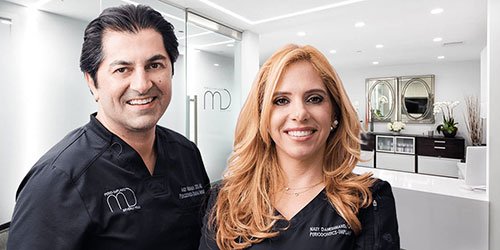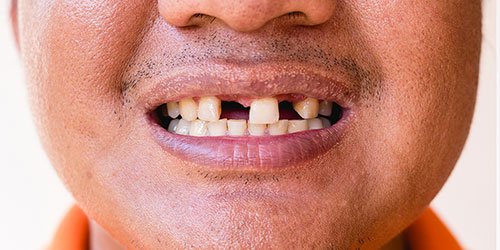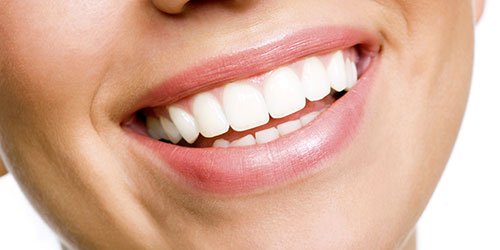When is Dental Scaling and Root Planing Needed?

Most folks are accustomed to getting routine teeth cleanings every six months. At these cleanings, a dental hygienist pokes around your gums to remove tartar and plaque from your teeth and buffs your teeth to remove stains so you come out of the office with smooth, clean teeth. This is routine maintenance work done to keep your teeth and gums healthy.
If you have symptoms of periodontitis (or gum disease), you may need a more thorough type of dental cleaning in order to reverse a process that can ultimately result in the loss of your natural teeth.
When bacterial plaque and tartar build up under your gums, the tissue that keeps your gums snuggly fitting around each tooth can be affected. This buildup causes your gums to separate from your teeth.
The pocket, or space, between the top of a healthy gumline and where it attaches to the tooth should be between 1 to 3 millimeters deep. When bacterial plaque and tartar accumulate under the gumline, this causes pocket deepening.
Signs of advanced gum disease include having red, swollen gums with pockets (known as periodontal pockets) of 4 millimeters or greater in depth, having bad breath (halitosis), and heavy tartar buildup. When you have this trifecta, it’s the perfect storm for tooth loss, because the bacteria can erode both your gums and your tooth roots.
What happens during a Deep Cleaning or Scaling and Root Planing Procedure?
Scaling and root planing, also known as “deep cleaning,” is the gold standard non-invasive treatment for chronic periodontitis, according to the Journal of Evidence Based Dental Practice.

This periodontal treatment involves using special dental instruments to scrape (or “scale”) the plaque, bacterial toxins, and tartar deposits from your teeth and root surfaces. Next, your root surfaces are buffed (or “planed”) to remove the rough areas that can harbor bacteria. This is typically performed with a local anesthetic for patient comfort.
Keeping your root surfaces smooth prevents bacteria, plaque, and tartar from reattaching to your tooth under the gumline. This, in turn, lets your gums heal and attach more snugly to your teeth, keeping them firmly anchored in place.
In the case of more severe periodontal disease, sometimes root planing and scaling aren’t sufficient to arrest the bone loss, your periodontist might recommend surgery. Nonetheless, root planing and scaling often lessen the amount of surgery that you will eventually need.
After the Scaling and Root Planing Procedure
About one week following your scaling and root planing, you will be seen in follow-up so that your periodontist can monitor your gum healing and the status of your pockets. In most cases, red swollen gum tissue becomes pink and firm, gum bleeding is decreased, and gum pockets become shallower. If you respond well to this treatment and commit to regular maintenance visits and a good home oral care regimen, you may not need further treatments.
More advanced periodontal disease, however, may require surgical interventions by your periodontist to arrest the progression of bone loss threatening your teeth and overall dental health.
The best way to prevent periodontal disease … is to maintain your oral hygiene at home.
The Importance of Periodontal Maintenance
After having a root planing and scaling procedure you might think that you just dodged a bullet. The truth is that once you have been diagnosed with periodontal disease, you will need to have regular maintenance visits on a schedule recommended by your periodontist to monitor for disease progression.
These maintenance visits will consist of routine cleanings and a careful examination of your gum tissue. The examination includes measuring your gum pocket depths as well as any erosion of gum or bone tissue that may have occurred and which might warrant additional interventions.
How to prevent gum disease?
We understand that no one wants to undergo uncomfortable dental procedures. The best way to prevent periodontal disease and the need for scaling and root planing is to maintain your oral hygiene at home.
Brushing and flossing twice a day (at minimum) and rinsing with mouthwash will help prevent bacteria build-up under the gumline. Flossing, although not fun, is necessary to get under the gums where your toothbrush can’t reach.
If you notice bleeding gums when you brush and floss, that’s a sign of gingivitis, the first stage of periodontal disease. Improving your oral health in the early stages, before your gum pockets significantly deepen, will prevent the need for more intense treatment.
Why trust Los Angeles’ MD Perio for your Scaling and Root Planing Periodontal care?

Don’t cut corners with your dental care. Make sure you’re putting your oral health in the hands of doctors you can trust.
Award-winning husband-and-wife team Dr. Abdy Moshrefi, DDS and Dr. Nazanin Daneshmand, DDS are two of the most trusted periodontists in Beverly Hills. Both are board-certified in periodontics and implantology and between them, they have almost four decades of experience.
Backed by an expert team of dental professionals who are uniquely qualified in a full range of periodontic corrective treatments. MD Periodontics offers outstanding care in a state-of-the-art facility with a warm, welcoming family environment where our patients are truly treated like family.
To schedule a consultation, click here or call us at (855) 245-1100. Your smile (and gums) will thank you!
At MD Periodontics, we take our patients’ safety seriously. Our facility’s Covid-19 patient safety procedures exceed all CDC recommendations. Masks are required in our institutes at all times.
We are conveniently located to patients throughout Southern California and the Los Angeles area. Our Beverly Hills office is conveniently located near West Los Angeles, Culver City, West Hollywood, Downtown Los Angeles, Marina del Rey, Pacific Palisades, Malibu, Manhattan Beach, Sherman Oaks, and Encino.
 (855) 245-1100
(855) 245-1100 Scaling and Root Planing
Scaling and Root Planing
 or call us at
or call us at 





































